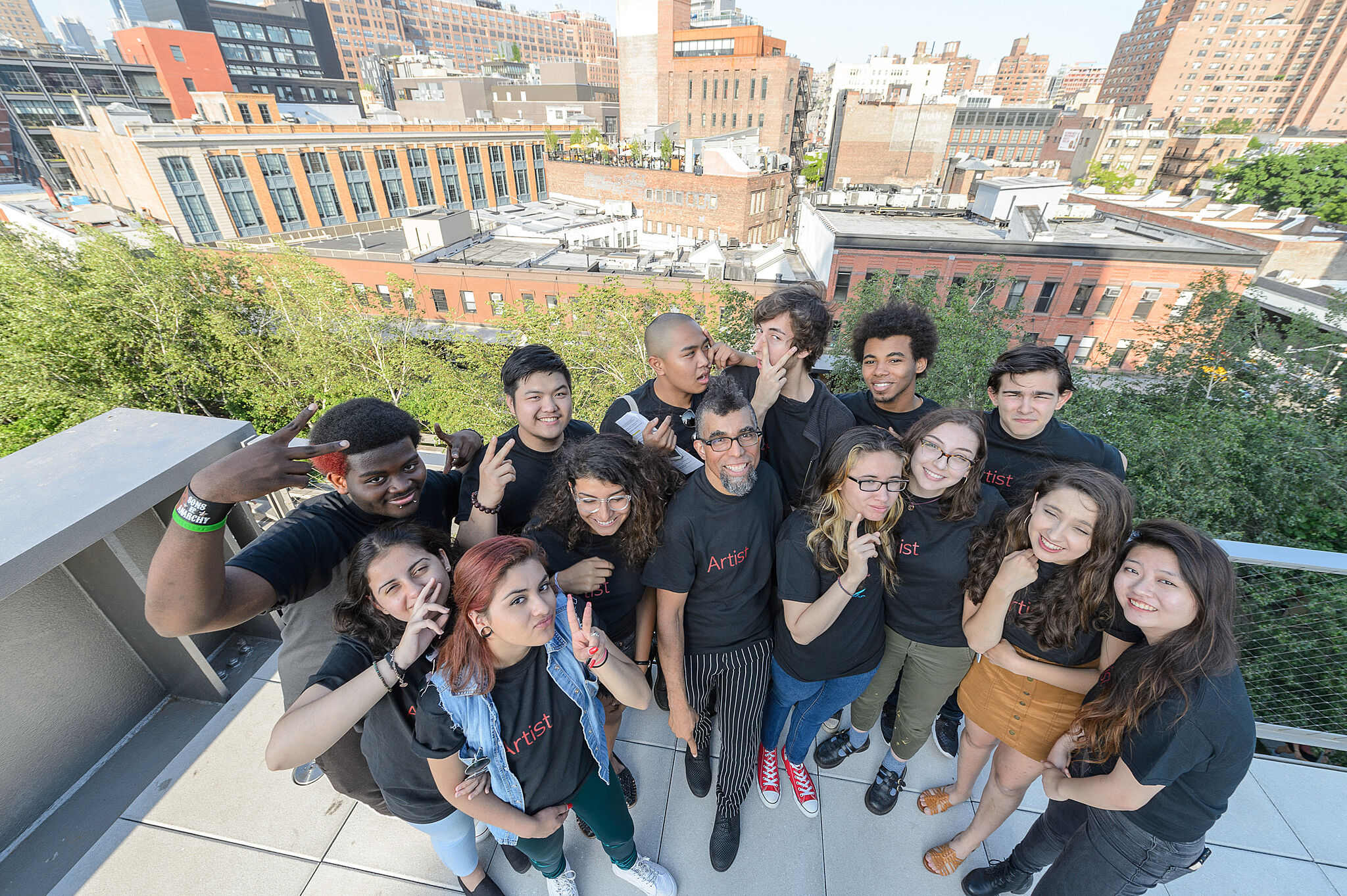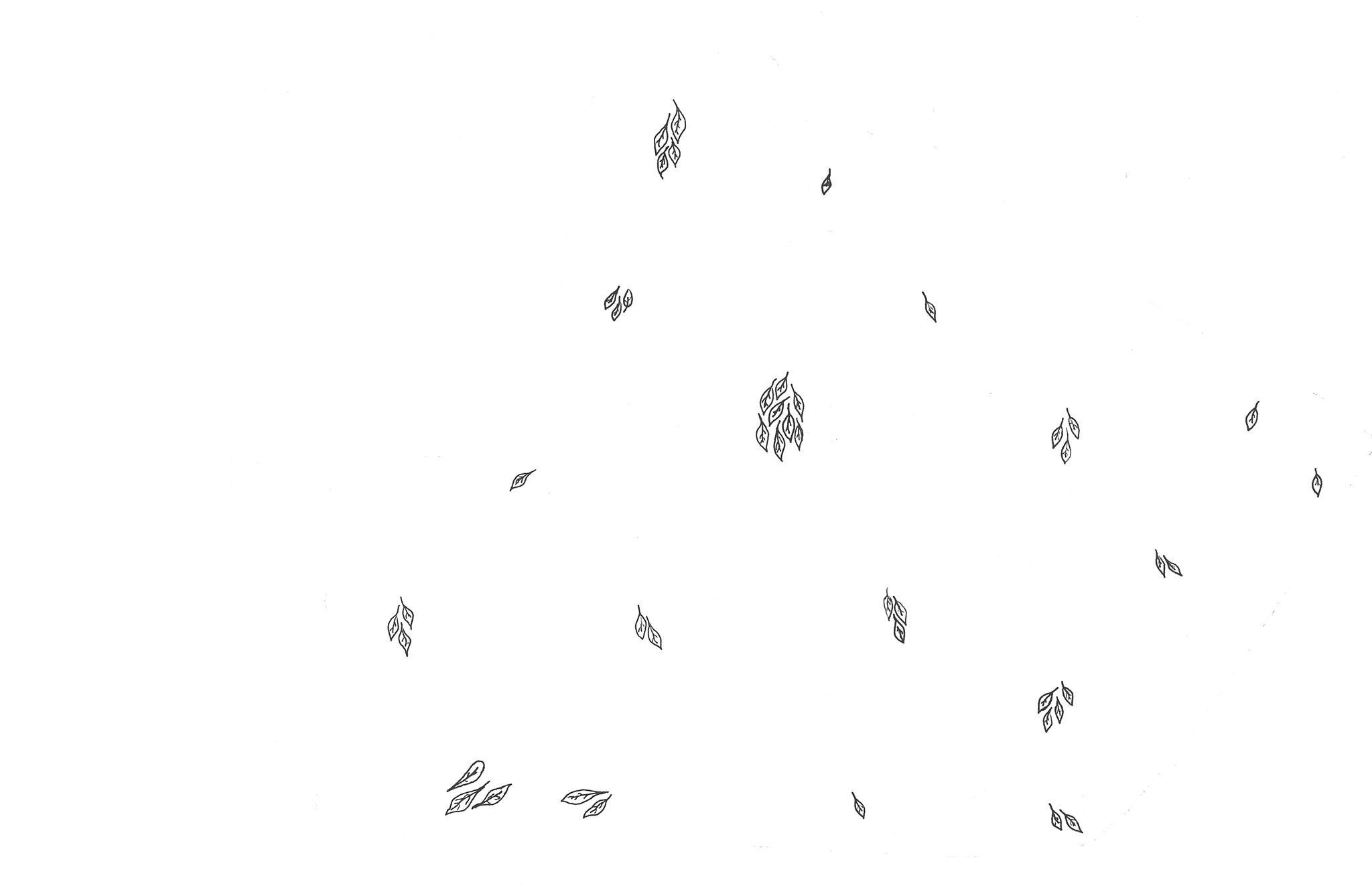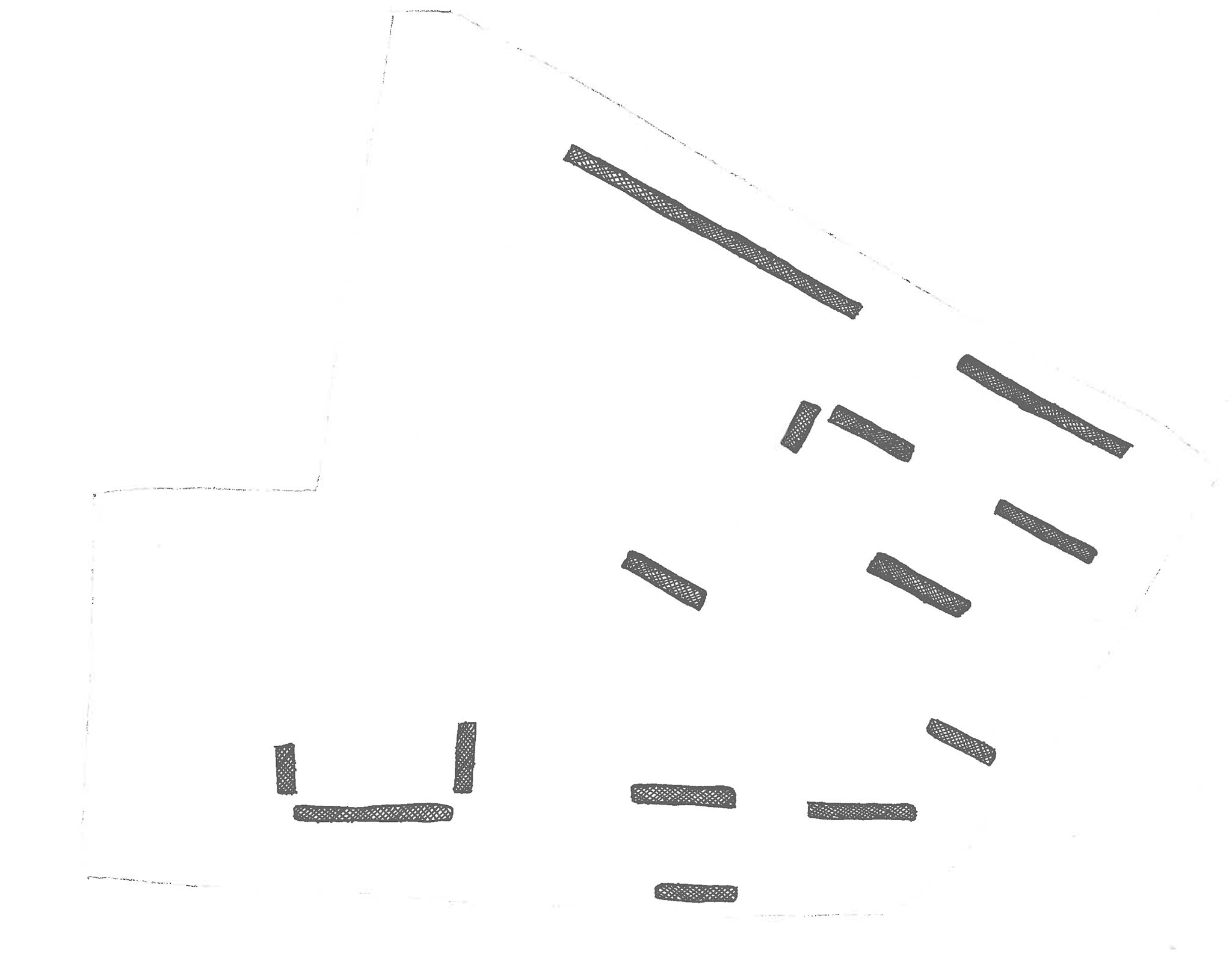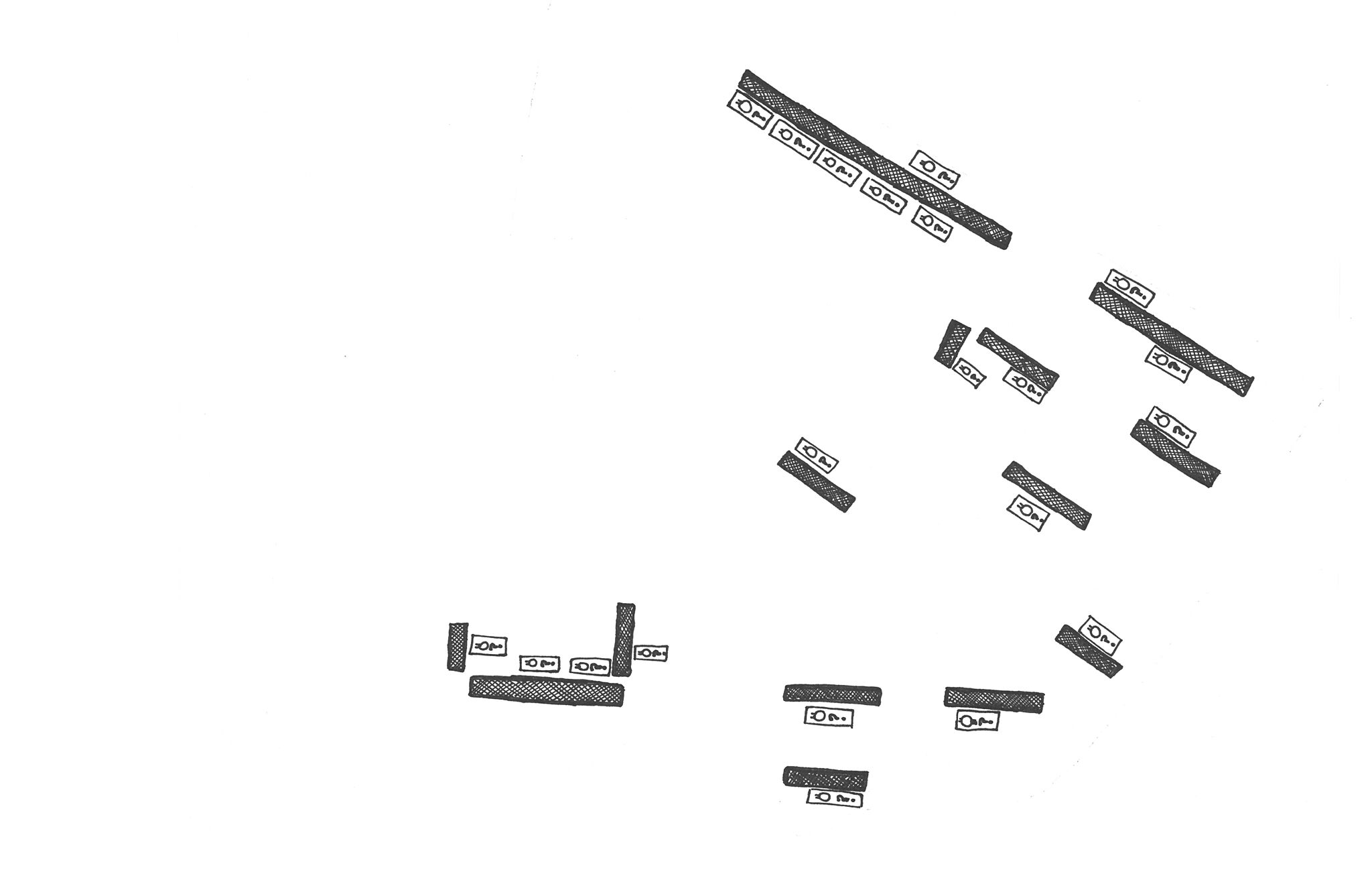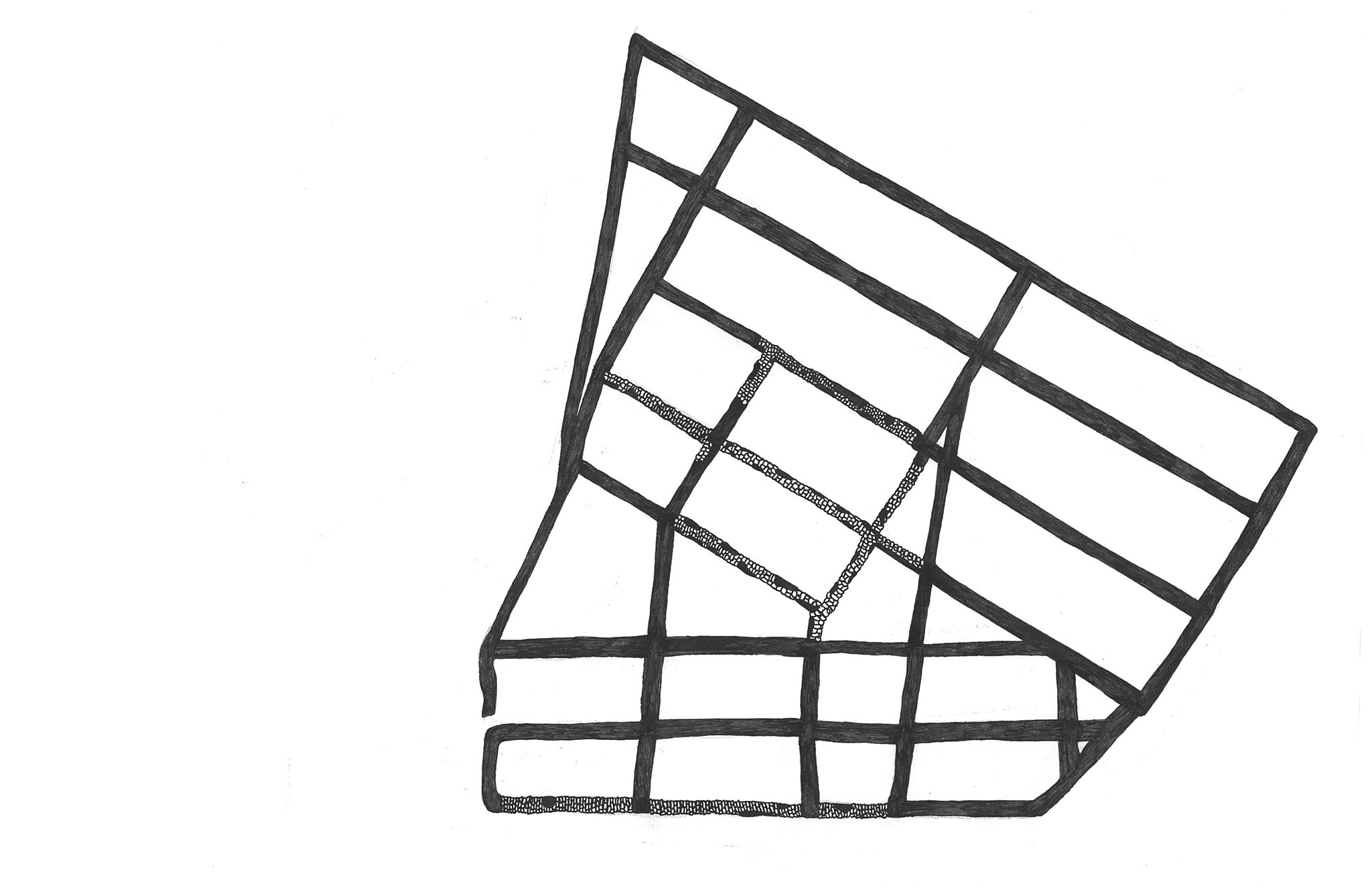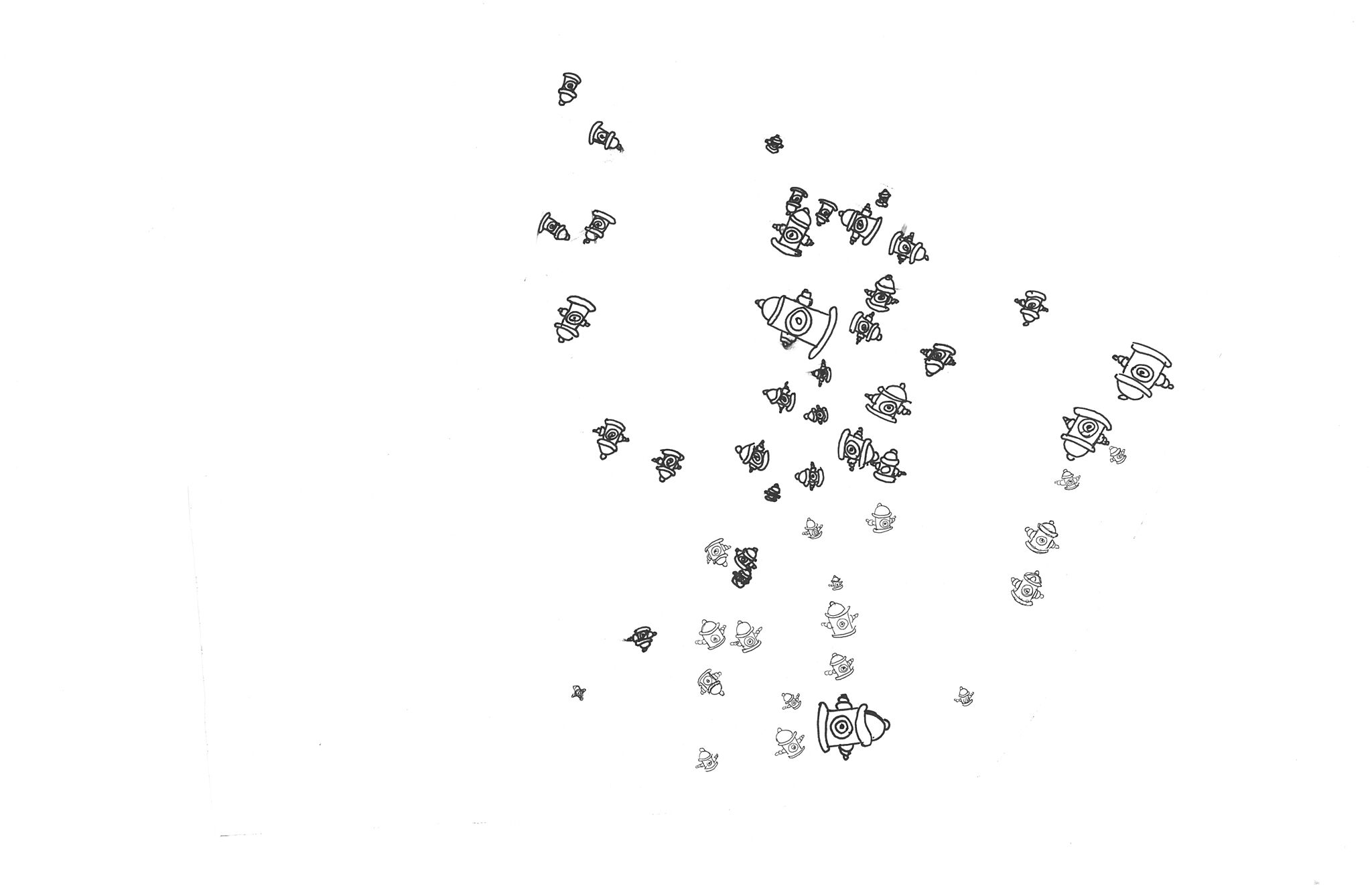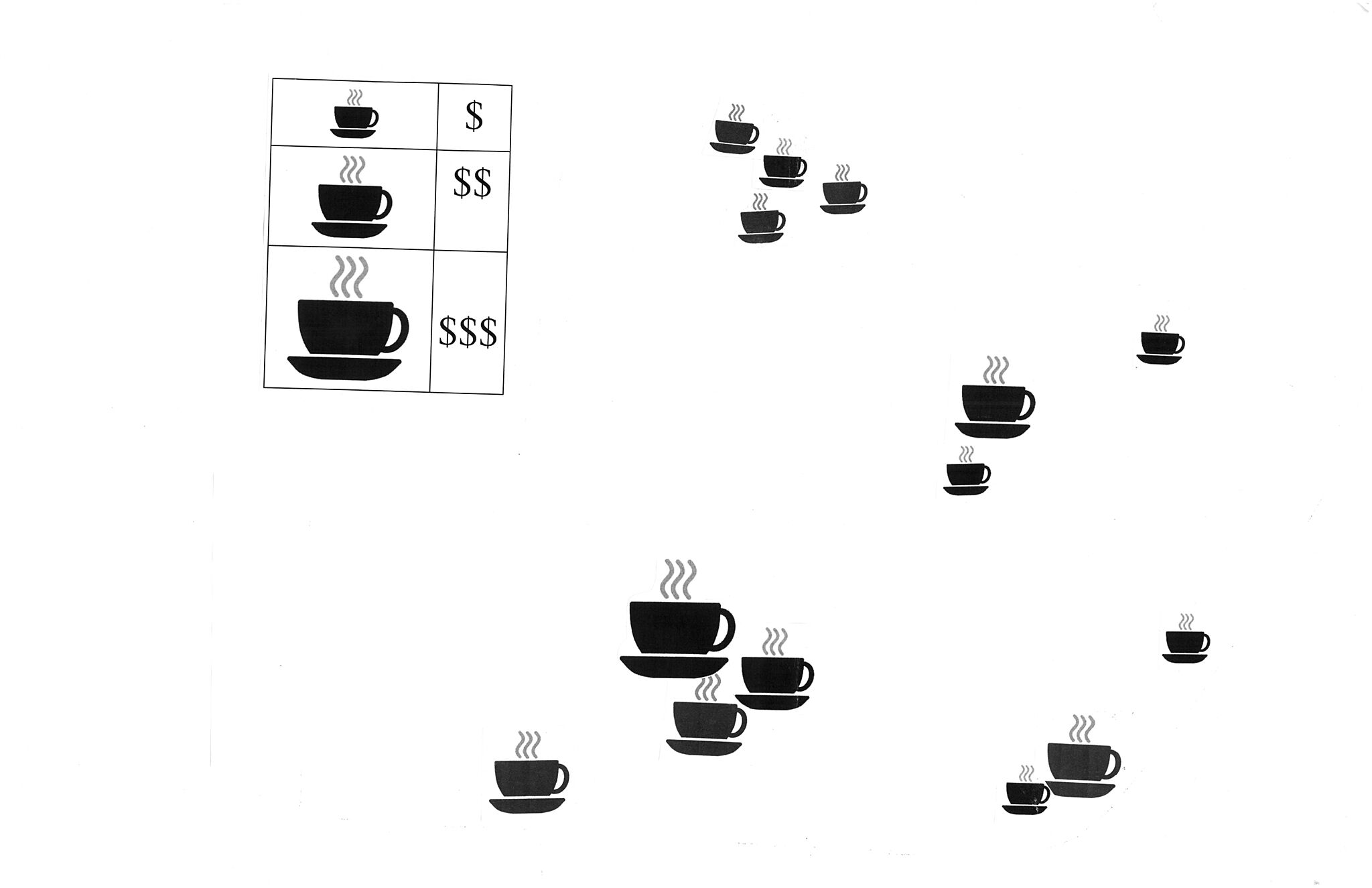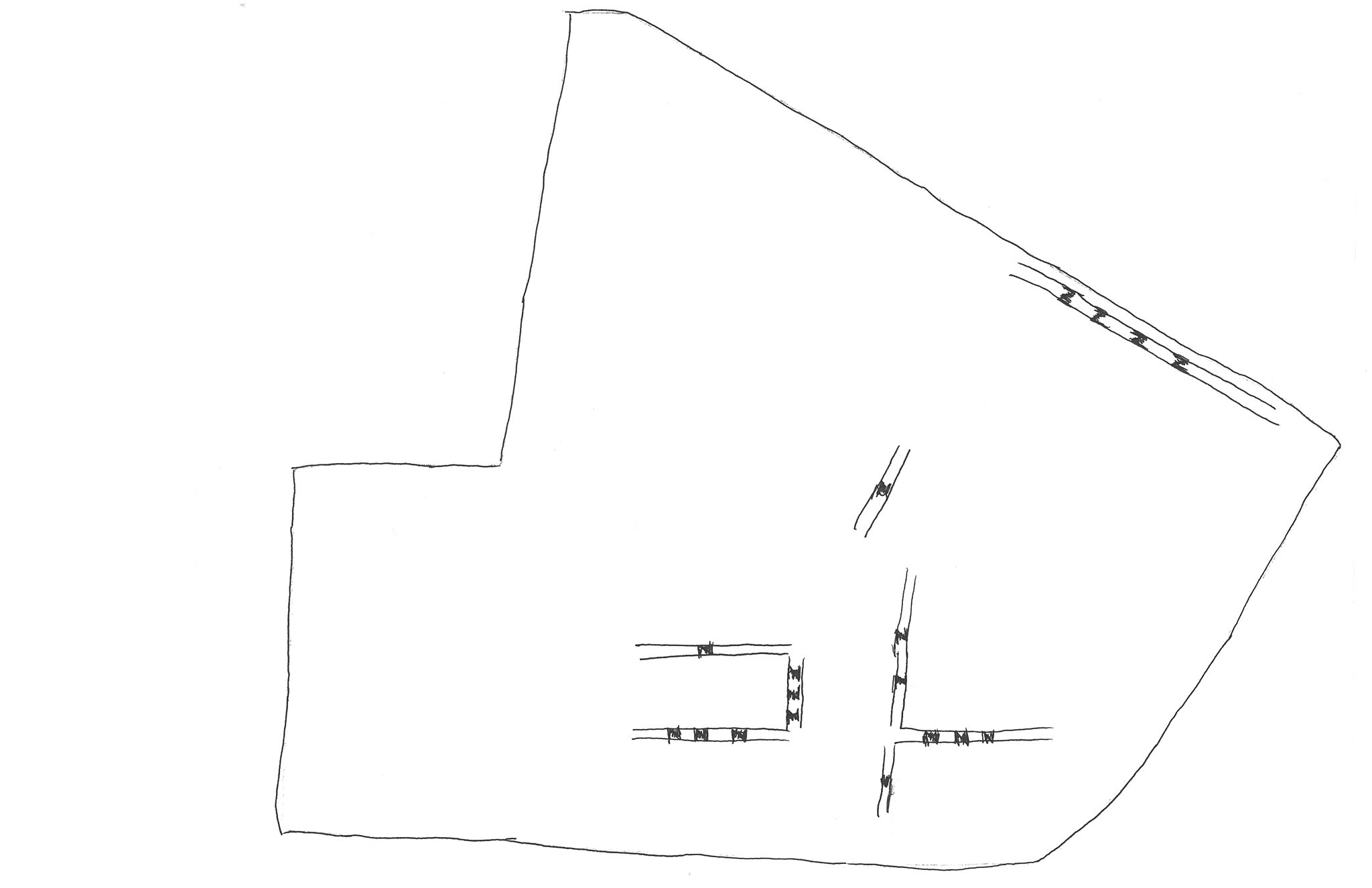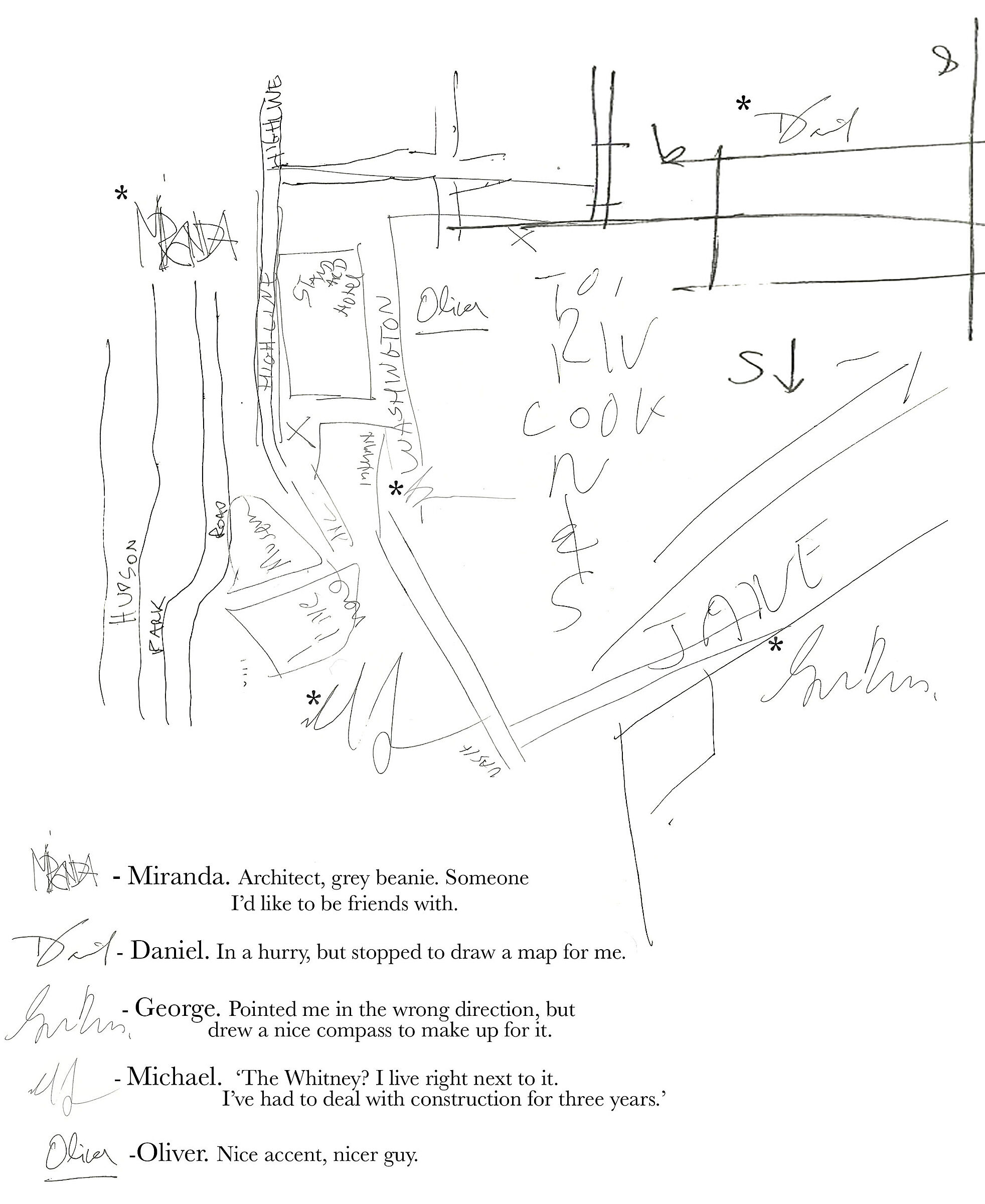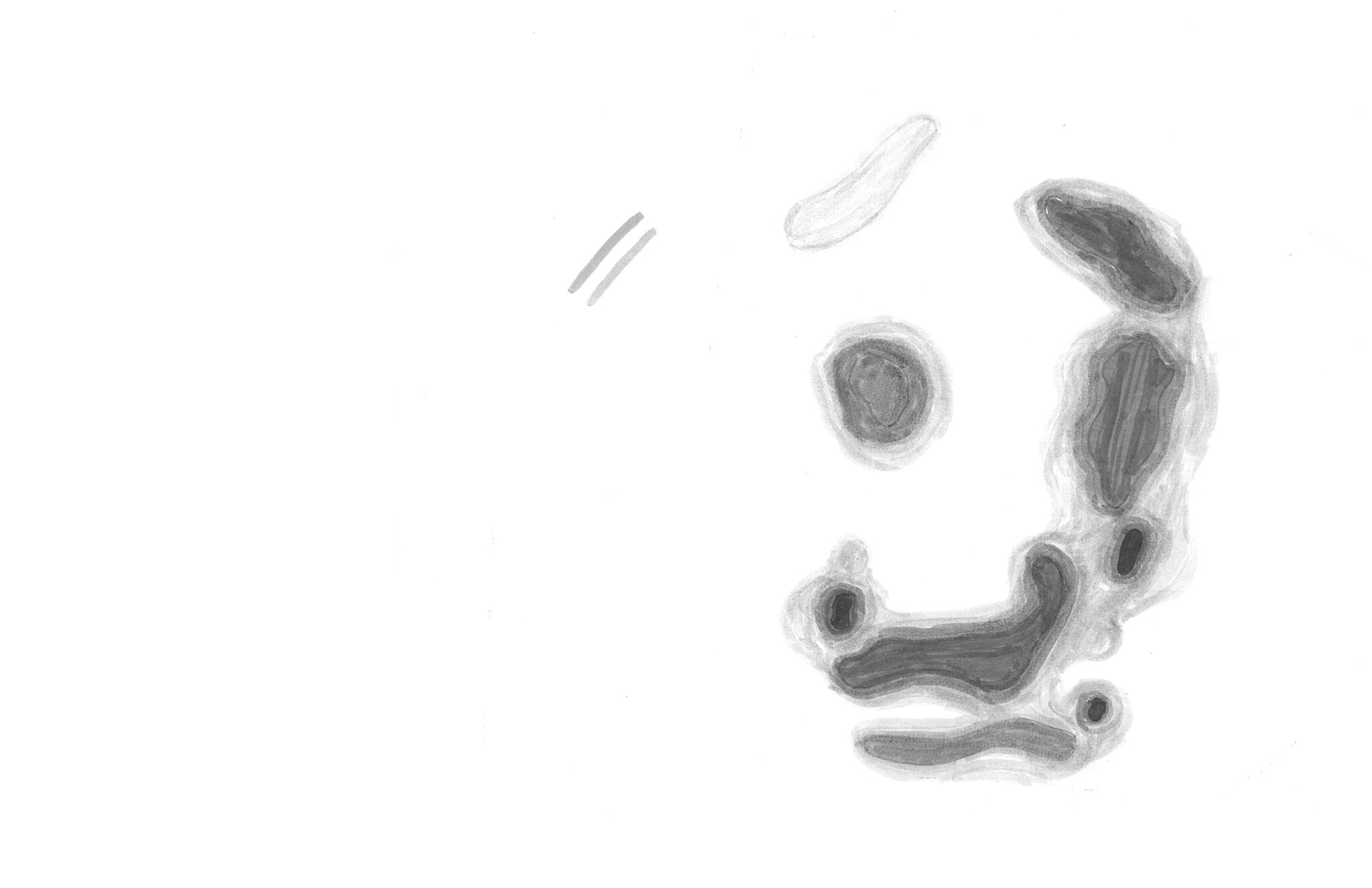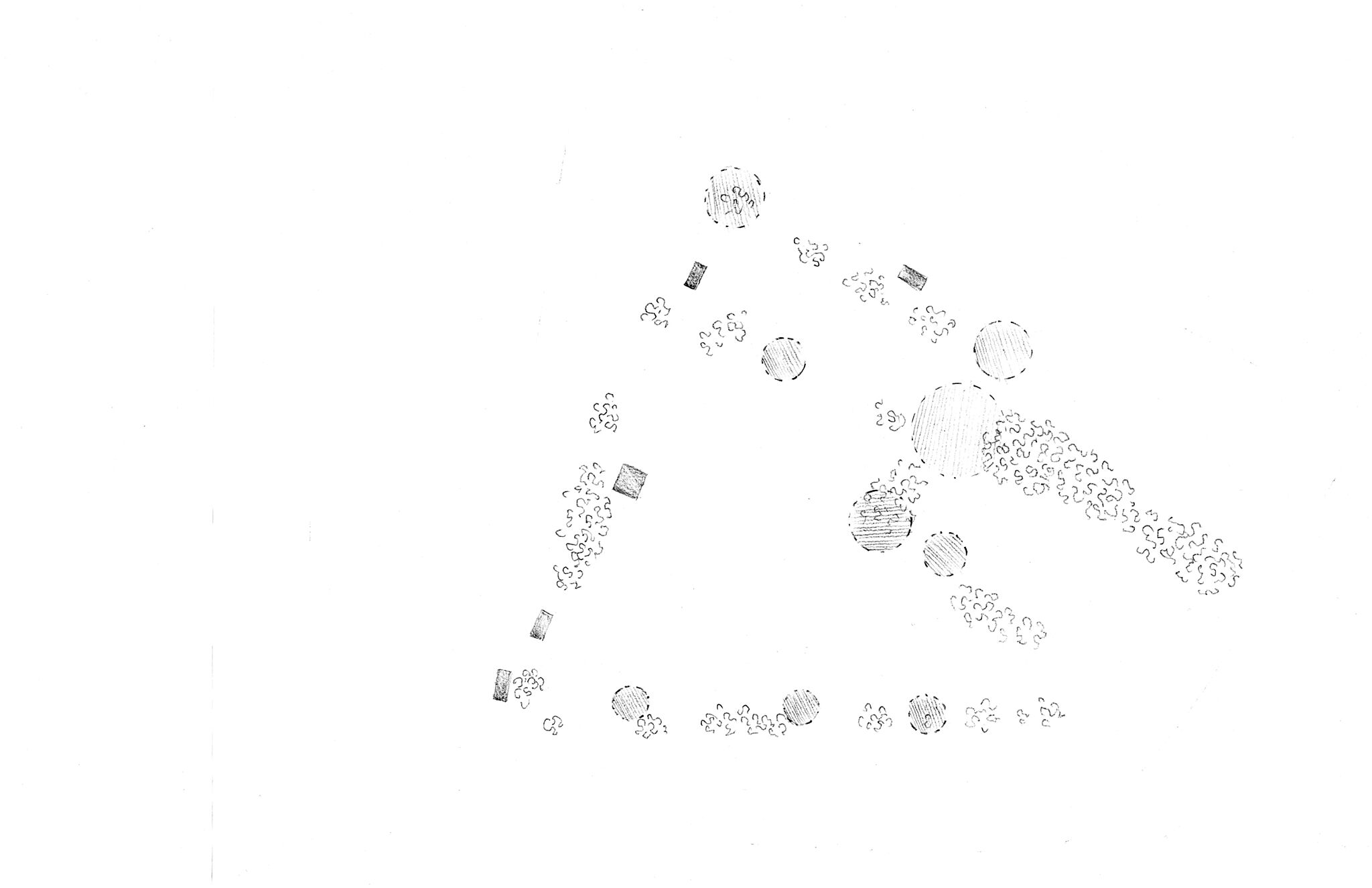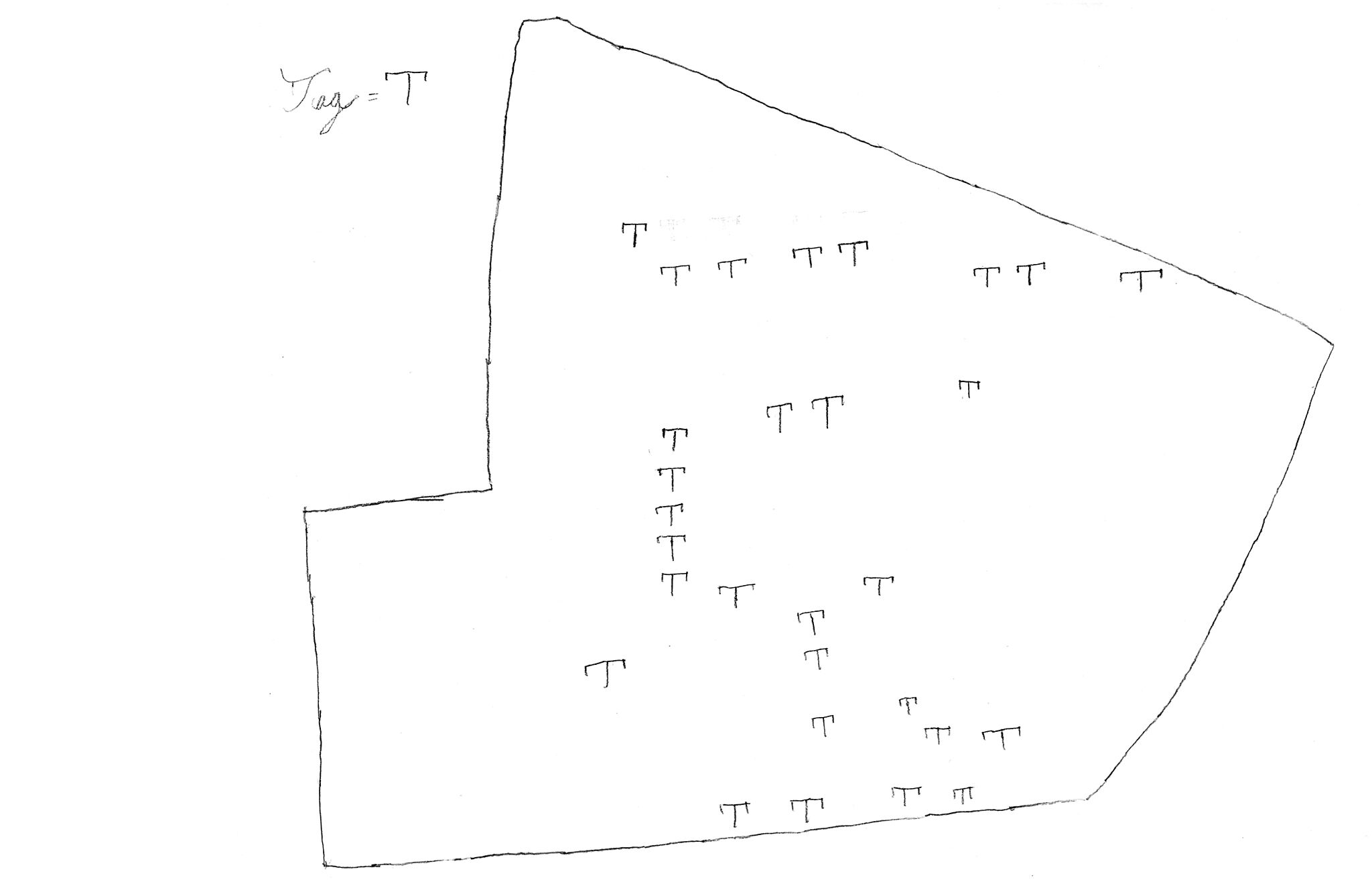Leaders
2014–2015
In 2014-15, YI Leaders worked with The Wooster Group on an opening performance for the Whitney’s new building. They also worked with Dread Scott to plan and host a teen opening event for the Museum’s inaugural exhibition, America Is Hard to See, and with Lize Mogel on mapping the Meatpacking District for Education’s Community Art Project.
Andrea
Andrea has been part of Youth Insights since 2013. Andrea aspires to be a chef one day and absolutely loves culinary arts. She loves to cook for her friends and family whenever she has the chance. Andrea absolutely adores contemporary art, especially graffiti and abstraction. She was born in Mexico and even though Spanish was her first language, she also knows how to speak English and French, and hopes to one day learn Portuguese.
Community Art Project. My map is about the trees I found above ground, such as rooftop gardens. As complicated as it sounds, it is not an uncommon thing to see in the Meatpacking District neighborhood. This area is for shopping and tourism, and there are many clubs, bars, and restaurants. This means that the streets and sidewalks are always in use, leaving no space for trees. Many of the buildings in the area have nicely decorated rooftops and balconies that are recorded on this map.
Anna
Anna is currently a senior at Stuyvesant High School. She has been interested in art for as long as she can remember. She began painting and drawing at the age of five and kept taking classes throughout her childhood. She took precollege classes at Pratt Institute for several semesters in high school and is the executive art director for the theater community at her school. Anna first came to the Whitney when she was five or six years old to the Saturday Family Programs that she now assists in. She hopes to continue studying studio art and art history in college and pursue it as a hobby in the future. In five years, Anna sees herself being the artsiest person in the freshman class of a great medical school. Despite her love for art, she still thinks that she truly wants to become a physician or surgeon when she grows up. Fun fact! This year is the first time Anna is taking an art class of any kind in her high school experience. She guesses that’s what you get when you go to a strict math and science high school.
Community Art Project. Can we still call this the Meatpacking District? It is 2015 here on Gansevoort Street and the new is displacing the old. The factories, brownstones, and cobblestones are disappearing and the neighborhood is gentrified. We now see new buildings constructed with giant glass windows, ready to become hyper-expensive storefronts and clubs for the city's elite. The only Meatpacking going on here is that of a twenty year old’s thighs into a pair of $700 skinny jeans.
Carlo
Born and raised in Manhattan, Carlo is a senior at the Bard High School Early College campus. Carlo has absolutely no idea what he wants to do with his life and does not have much of a grasp of his future plans. He says that he likes to live in the moment but everyone knows that is code for straight up lazy. Furthermore, the only hope Carlo has for the future is to be in the college of his choice at the start of the next school year. Carlo has always been interested in the arts because he grew up in a very art-centric environment. His mother is an artist. Since he was young, his mother always made sure that he was drawing, and Carlo has come to both appreciate and identify with art. His favorite author is Ivan Turgenev, and his favorite book by Turgenev is Fathers and Sons. Carlo wants you to know that his astrological sign is Leo, while he is also an Ox in the Chinese zodiac.
Community Art Project. My decision to map doorknob-less doors in the Meatpacking District was made on a whim when I saw one while walking outside. Doorknob-less doors are doors that have no doorknob, handle, or lock, and are physically impossible to open from the outside. While I was recording their locations, I noticed that most of them were situated on warehouse and factory buildings. Knowing that these kinds of buildings are associated with the Meatpacking District's history, the doors became my own personal symbol of the neighborhood’s past.
I felt that mapping something that people are habitually oblivious to was fruitful because maps are normally used for the purpose of helping you locate something. The desire to look for these doors would not surface unless people were purposely pointed in their direction. I illustrated them on the map as a door knob with a question mark because of how they mystified me. I felt that it would be ironic to represent these doors with something that they did not possess.
Holly
Holly is a senior at The Beekman School. Next year she hopes to continue interning in the art community while beginning her freshman year of college. She would also like to continue her hobby of drawing and reading. She has read many books by Kurt Vonnegut and considers him to be her favorite author. Her favorite book by him is Cat’s Cradle. She is inspired by his writing to improve her own and expand her bounds of creativity. She loves to spend time with her family and her dogs. She grew up in Astoria, Queens in a close Italian family. She loves Italian food and hopes to visit Italy sometime soon. Her Aunt Teresa is the person who first introduced her to art and continues to support Holly in her endeavors. Holly hopes to continue growing within the art community and to learn more about herself and others through art.
Community Art Project. The ground that we walk on can tell as intricate and revealing a story as those who walk on it. The changes that a neighborhood goes through are reflected on its street surfaces. Pavement is specific to the time period as well as to the needs of a particular neighborhood. With more traffic comes the need for more paved roads. In the Meatpacking District the unique combination of historic cobblestone and modern asphalt tells the story of the neighborhood’s development. The asphalt trickles toward the water with an increasing presence, engulfing the historic cobblestone. Its heavy blackness seems to shadow the history of the neighborhood in the glaze of its future.
Janice
Janice has been an artist for as long as she can remember and has now taken an interest in the field of surgery. Janice sees herself attending college away from home where she could learn to be more independent and discover what the real world has to offer. She enjoys coming out of her comfort zone and considers that to be one of her weaknesses. As someone who always has a positive attitude and tries to make that an aspect of her everyday life, she also hopes to become someone who has complete confidence in herself and her successes. As a Taurus she knows that the world is filled with love and depending on the aura that you project, you will definitely get it back in return.
Community Art Project. Fire hydrants are very important and yet they are often overlooked. They are small and discreet yet always out in the open, and more common than we realize. They are used to protect us from fires and for fun in the summer in some neighborhoods. I chose fire hydrants because we barely notice them unless there is some sort of emergency. I found it interesting that we don’t notice an object, such as a fire hydrant, that could be used to save our lives.
Jejomar
Jejomar is a New York native currently attending DeWitt Clinton High School in the Bronx. Jejomar, on a noble Monday night, has decided to do all his homework and this biography, due the following day. When he grows up, he hopes to become a scientist and an actor, a hybrid between Anne Hathaway and Bill Nye the Science Guy. In a year he sees himself happy and content in the future college he’s attending. Because Jejomar is a Pisces, he has the odd ability to feel the emotions of others. Luckily, he also has a fabulous smile and an optimistic personality that will lift anyone up.
Community Art Project. Synonymous with the New York morning. coffee has evolved, appealing more to the individuals willing to pay a hefty price for a small cup than the pragmatist who will not pay more than one dollar per cup from city food carts. Coffee shops in and around the Chelsea neighborhood have transformed the act of making and drinking coffee into an art form. All the coffee shops recorded on this map are independent businesses dedicated to perfecting the prized brown beverage. There are three main sizes of cups on the map: small, medium, and large. Using Google as a ruler, the size of each mug is determined by how many “$” signs appear when the shop name is googled.
Krystal
Krystal is sixteen years old, and a junior at School of the Future High school in Manhattan. With this in mind, she thought it was important to bring teens back to museums, because museums are such a great places to be. She thinks that you can grow as a person, be able to understand others, and be open to different points of view. The arts have been part of Krystal’s whole life (even though her life hasn’t been too long); she’s always gone to museums or had art books that she would stare at for hours as a young child. She always made art, wrote, and performed. She has a deep appreciation and love for the arts that she wants to share with other teens.
Community Art Project. Gentrification. Happens. Everywhere. Out with the old and in with the new. But the new doesn’t necessarily mean better. Generations of a family who have lived there for years are now being displaced by affluent people. The architectural detail of old buildings is destroyed for new glass skyscrapers. No one likes the old. Money makes everything change.
Lisa
Lisa joined Youth Insights Leaders because she has always loved the Whitney for its support of living artists, and wanted the opportunity to be a part of the Whitney’s move to its new downtown location. She was part of YI Artists during spring 2013 and fall 2014. The arts have had a large impact in Lisa’s life; she plans on minoring or majoring in fine arts and is considering a career as a curator. Right now she is sitting at Whole Foods, trying to snatch bites of her dinner between writing this biography, drinking her coffee, and doing the rest of her work for the night. Her favorite author is Kurt Vonnegut Jr., and her favorite artist is Dorothea Tanning, although these are constantly subject to change. Her hobbies are reading and writing.
Community Art Project. The Meatpacking District is a neighborhood perpetually in flux. A century ago it was home to more than two hundred slaughterhouses; sixty years later, a new industry of nightclubs and sex clubs emerged; and thirty years later, high-end boutiques began to open. The Whitney Museum’s move to Gansevoort Street will no doubt also play a significant role in the Meatpacking District’s continued gentrification, for better or for worse. The objective of this map was to capture a snapshot of the neighborhood during this tumultuous period of metamorphosis through its members. On February 17, 2015, at around 5 pm, I wandered around the area bounded by the Hudson River to the west, 16th Street to the north, Eighth Avenue to the east, and Jane Street to the south, and asked strangers at random if they could draw me a map to the Whitney Museum. The result` is a collection of five maps, from five different people, spliced together to make one.
Logan and Michael
Logan was born in 1998. He aspires to become a 3D artist working predominantly in either the movie or video game industries. He spends much of his time doing various martial arts and he has been practicing karate for eight years and jujitsu for three. More recently he has begun to teach karate at the Cathedral School. He grew up around artists—his parents are a photographer and a makeup artist—he has always had a great interest in the arts. Logan started drawing at a young age and has continued to develop his art, most recently with 3D modeling and animation. He has always admired his crazy sculptures and often uncomfortable exhibitions.
Michael, also known as “Alvin Spencer,” is currently a junior at Gotham Professional Arts Academy. He likes to draw, act, and write poetry. He is learning to play the electric guitar and dance. Even though he is multi-talented, Michael really wants to be an actor and part-time manga artist. His zodiac sign is Capricorn, though many people mistake him for a Leo. Furthermore, when people meet him, he has been described as the scary Goth boy, but those that know him know how cool he really is.
Community Art Project. We mapped the location of the bikes in the area surrounding the Whitney. Like a heat map, the darker areas represent a high density of bikes while the lighter areas show a low density of bikes. We were curious about how many bikes we could find in this neighborhood. There were definitely more bikes here than Logan was used to seeing in his neighborhood. By tracking where people chained up their bikes, he discovered that people may find safety in numbers, which would explain why most bikes are part of a larger group.
Nicholas
Nicholas is an enthusiastic and passionate senior at the Urban Academy. He is a Gemini who, unlike most of his kind, is extremely shy. Having participated in Youth Insights Artists, he wants to continue being a part of the Whitney community. Next year, he hopes to be in college preparing for his dream job in a medical career. He loves art, graphic art to be exact, and hopes to also become a professional graphic designer. He still has not found his special talent yet and considers himself to be a jack of all trades.
Community Art Project. I tracked small garbage cans and dumpsters in the area as well as trash on the ground. It is interesting to see that there are more garbage cans in the more populated area than near the river. Since the area around the river is more industrialized, there are trash cans along the road and heaps of them piled up at every other lamp post. It makes sense that the cans in commercial areas are less full because the trash is usually wrappers or waste that is smaller in size. Along the river, there are more dumpsters for larger industrial waste. Despite the giant waste disposal receptacles near the docks, there is still an abundance of trash in the industrial zones just across the road.
Sammie Jo
Sammie Jo is currently a senior at Edward R. Murrow High School and a Youth Insights Leader. Even more currently, she is eating cold spaghetti at her desk, writing about herself. Her love for art began in middle school, where she spent most of her lunch periods working in the school’s darkroom. She hopes to live in the Pacific Northwest after college in an apartment with a lot of pets and books.
Community Art Project. Walking through the Meatpacking District is like navigating an obstacle course of orange tape and hard hats. The neighborhood is in a constant state of construction, with new buildings popping up around almost every corner. The Whitney's new building is the most obvious example—the new building occupies the length of an entire block on Gansevoort Street. Small-scale construction such as a clothing store getting new glass windows or workers installing bike racks that seem arbitrary but also reveal the neighborhood's shifting appearance and population. This map documents both small and large-scale construction, represented by the cone symbol. The symbol grows in size according to the construction zone it represents.
Zeus
Zeus is a multi-faceted Aquarian, hailing from Washington Heights. As an Aquarian, he prides himself on thinking critically and pragmatically, and tends to articulate his unique perspectives with candor, passion, and conviction. He believes that these characteristics, paired with a strong thirst for knowledge, allow him to interact with art with ease and enjoyment. Zeus is currently trying to become a museum educator and an artist. As an artist, his practice is photography and poetry. He hopes to use artistic expression as a means to question the legitimacy of hierarchical social, political, and economic constructs. As an aspiring museum educator, Zeus hopes to teach people how to interact with art, while encouraging people to play an active role in shaping their cultures.
Community Art Project. Tagging is often perceived as a polarizing art form. While proponents tend to be more tolerant of the artist movement, opponents see it as a destructive practice. I, on the other hand, see the art form as something entirely different. Through the means of a tag, the artist creates an identity, then attaches it to something sturdy such as a truck, wall, or traffic sign. On a deeper level, the artist attempts to be noticed by a society which might give him/her no other recognition. By mapping tags, I hope that I can give power to these disempowered artists while validating their work.

